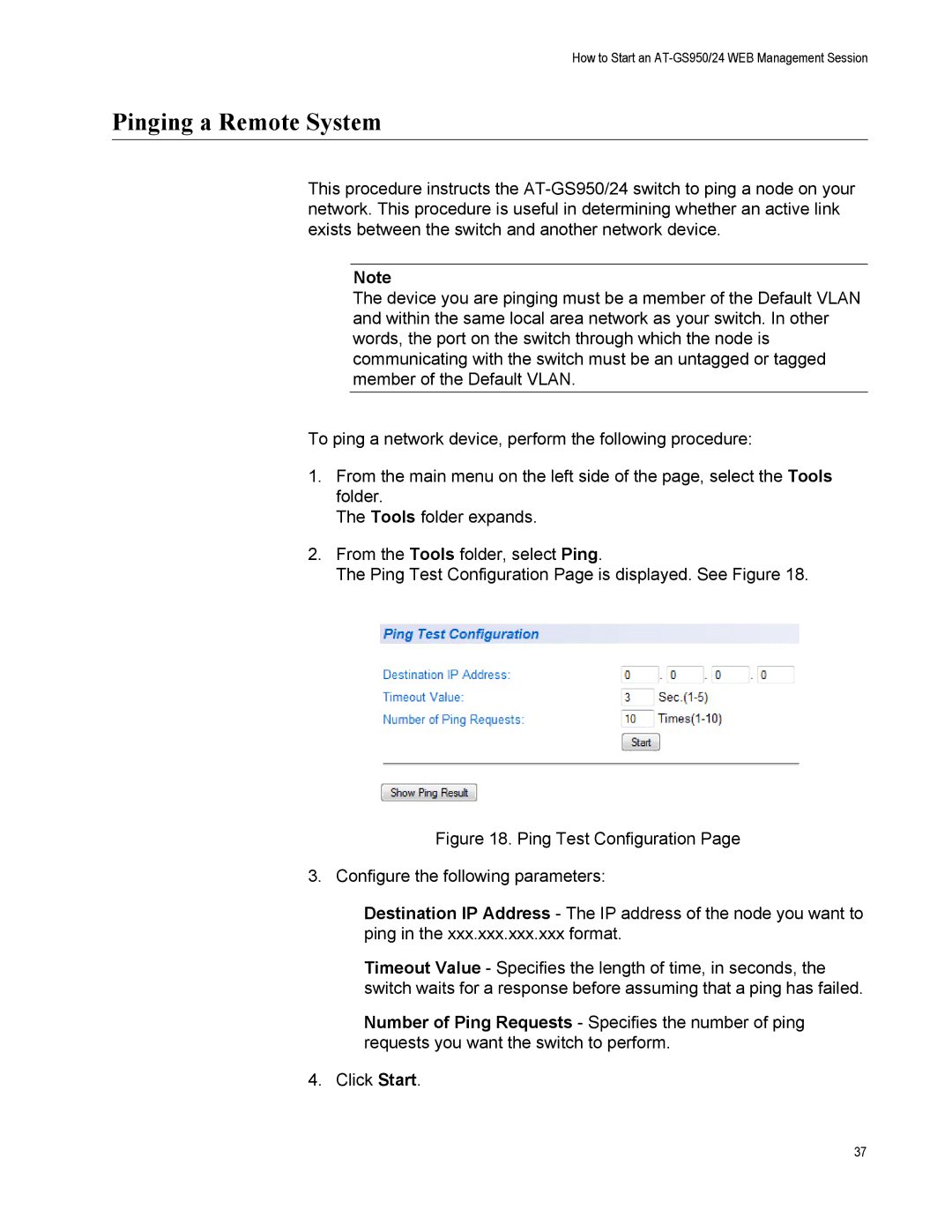AT-GS24, AT-GS950/24 specifications
The Allied Telesis AT-GS950/24 is a robust and versatile gigabit Ethernet switch designed to cater to the growing demands of networked environments. With its 24 10/100/1000 Mbps ports, this switch provides high-speed connectivity essential for modern business operations, allowing organizations to seamlessly connect a variety of devices such as computers, printers, and servers.One of the standout features of the AT-GS950/24 is its Layer 2 switching capabilities, which enhance network performance and reliability. It supports a range of advanced network protocols, including VLANs (Virtual Local Area Networks), link aggregation, and Spanning Tree Protocol (STP). These features ensure optimal network traffic management and improved security by segmenting network traffic, thus isolating different departments or user groups.
The AT-GS950/24 also incorporates Quality of Service (QoS) functionality, enabling businesses to prioritize critical traffic. This is particularly valuable in environments where bandwidth-heavy applications, such as video conferencing or VoIP, are commonplace. By assigning priority levels to different types of data, the switch ensures a smooth and uninterrupted user experience.
In terms of management capabilities, the AT-GS950/24 offers both Web-based and command-line interface (CLI) management options. This flexibility allows network administrators to configure and monitor the switch easily, even across expansive networks. Moreover, support for SNMP (Simple Network Management Protocol) facilitates remote management and proactive network monitoring.
The hardware design of the AT-GS950/24 is equally impressive, featuring a fanless operation that enhances its reliability and reduces noise—ideal for office environments. The switch is also built to support rack mounting, making it easy to integrate into existing data center setups or network closets.
Energy efficiency is another significant aspect of the AT-GS950/24, as it complies with the IEEE 802.3az Energy Efficient Ethernet standard. This feature helps organizations reduce power consumption, leading to lower operational costs and a smaller carbon footprint.
In summary, the Allied Telesis AT-GS950/24 is a comprehensive solution for businesses looking to enhance their network infrastructure. With its array of features, including high-speed connectivity, advanced traffic management, and energy efficiency, this switch stands out as a valuable asset in any networking environment, supporting the evolving demands of modern technology.

